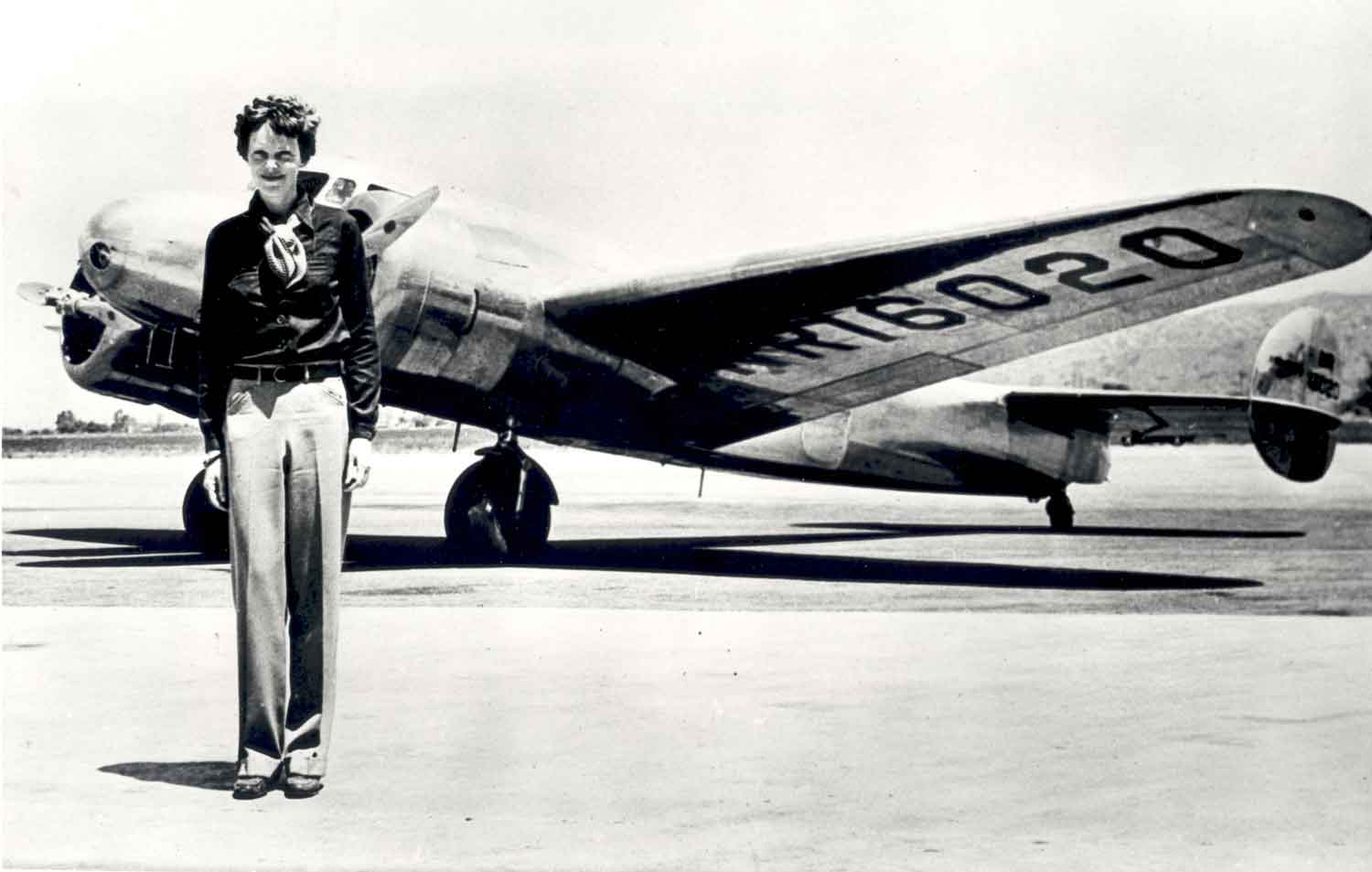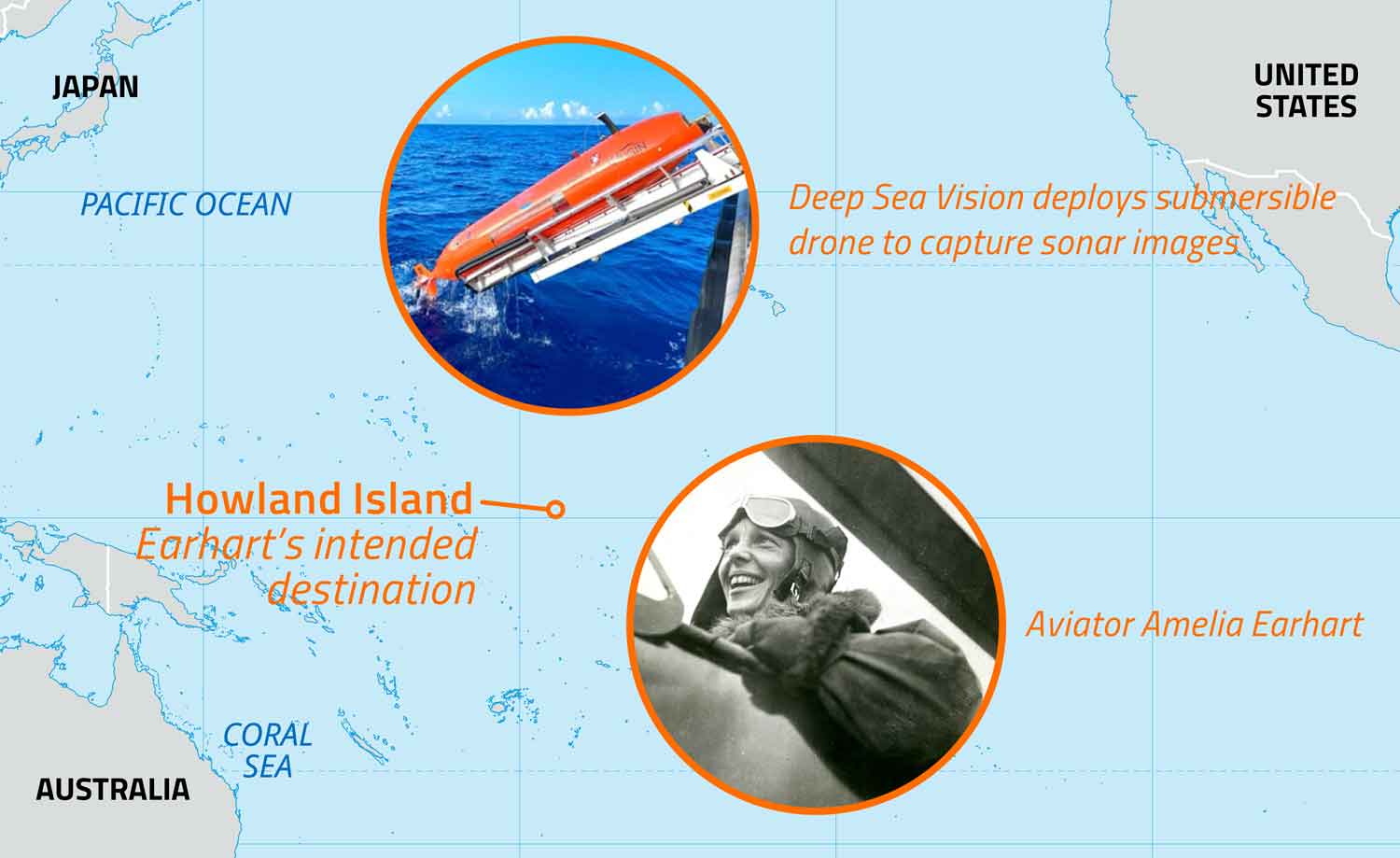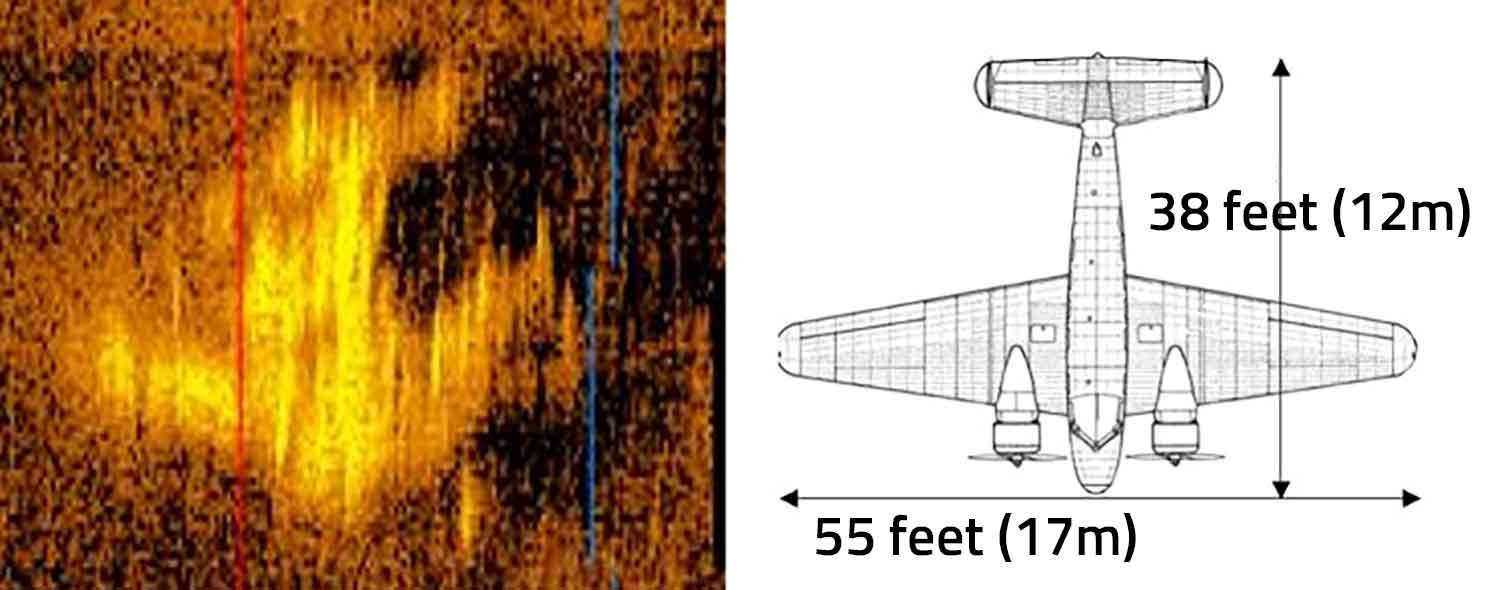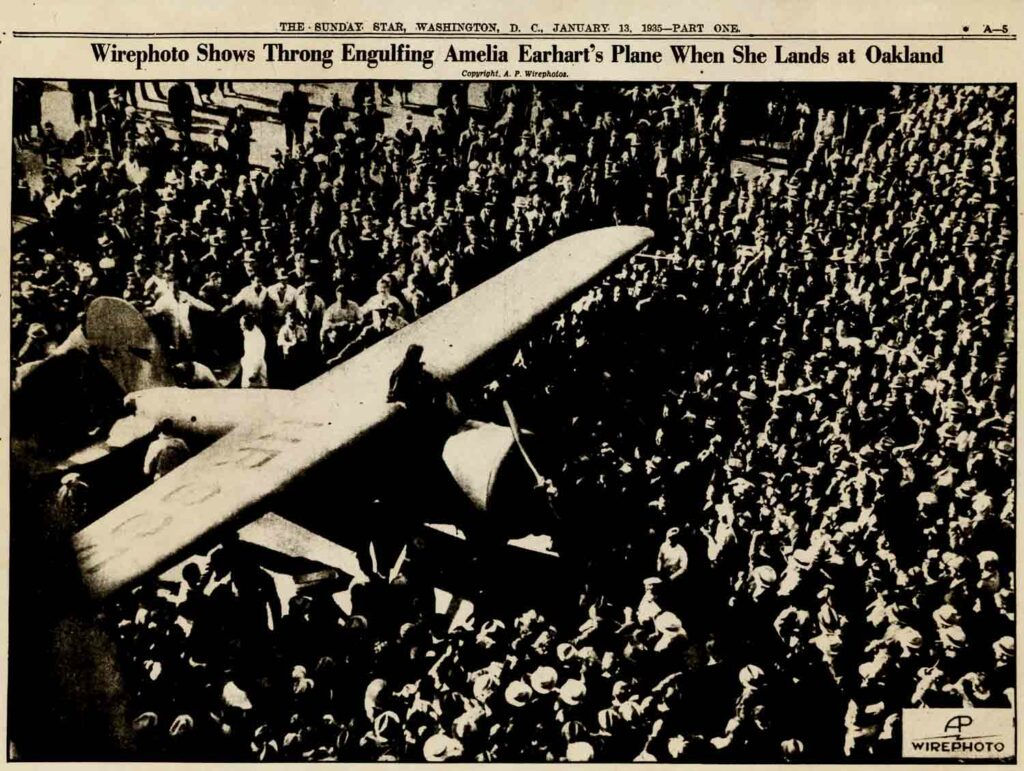Found at Last?
A company believes it has found the wreckage of famed pilot Amelia Earhart’s plane. Does the evidence hold up?

NASA
Amelia Earhart poses in front of her Lockheed Electra airplane.
A U.S. company believes it has located the wreckage of famed aviator Amelia Earhart’s plane, more than 86 years after it disappeared over the Pacific Ocean. Is one of history’s biggest mysteries about to be solved?
Earhart and navigator Fred Noonan were last heard from on July 2, 1937, when they sent several radio transmissions while trying to land on Howland Island in the Pacific. They planned to refuel on Howland and then continue Earhart’s attempt to become the first woman to fly solo around the world. Since the pair disappeared, many individuals and organizations have searched the area. So far, no one has been able to find any surefire evidence that can be traced to Earhart’s flight.

Deep Sea Vision; Photo illustration Encyclopædia Britannica, Inc.
Earhart intended to land on Howland Island in the Pacific Ocean.
But recently, marine robotic company Deep Sea Vision captured a blurry image of an undersea object that could be the wreckage of Earhart’s plane. The company used sonar technology, which uses sound waves to map the ocean floor, in the area around Howland Island.
“Deep Sea Vision scanned more than 5,200 square miles of ocean floor with a 16-person crew and the Kongsberg Discovery HUGIN 6000, the most advanced unmanned underwater drone,” the company posted on Instagram.
The newly found object, which is located about 100 miles (161 kilometers) from the island, appears to be the shape of a Lockheed 10-E Electra, the plane Earhart was piloting. The object is about 16,400 feet (4,999 meters) underwater.

Deep Sea Vision
A sonar image captured by Deep Sea Vision is shown alongside an illustration of Amelia Earhart’s plane.
But some people say it’s too early to conclude that Earhart’s plane has been found because there’s no proof. Deep Sea Vision is planning to investigate further. In the meantime, Dorothy Cochrane of the Smithsonian National Air and Space Museum says it’s best to wait before deciding the case is closed.
“Another [Deep Sea Vision] expedition will hopefully result in photographic images with more clarifying details as to [the object’s] identity,” Cochrane wrote on CNN.com.






